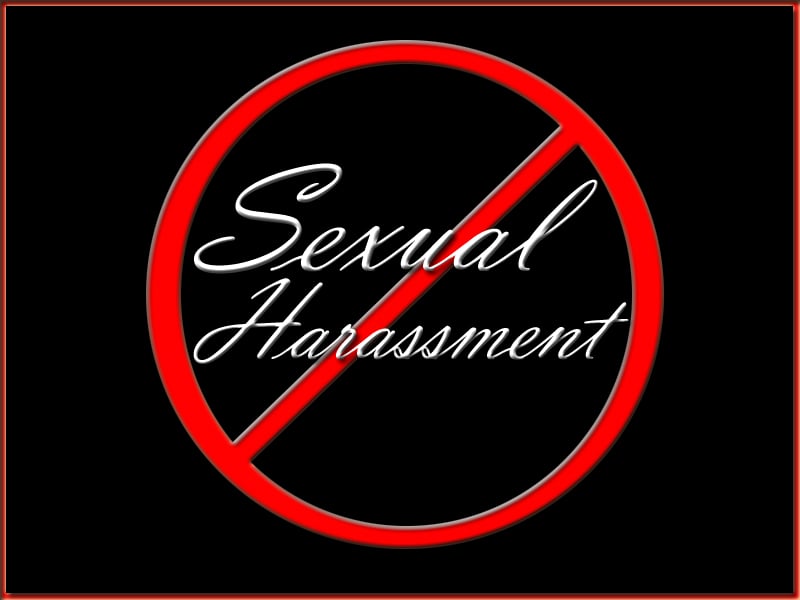 Sexual harassment suits may be filed against a business for any number of reasons. In fact, some employers are surprised to learn that sexual harassment charges have been filed against them because of suggestive posters, suggestive items on display in the workplace or because of lewd jokes told in the workplace. However, under California law, all of these are considered a violation of workplace rules.
Sexual harassment suits may be filed against a business for any number of reasons. In fact, some employers are surprised to learn that sexual harassment charges have been filed against them because of suggestive posters, suggestive items on display in the workplace or because of lewd jokes told in the workplace. However, under California law, all of these are considered a violation of workplace rules.
Preventing sexual harassment in the workplace
Employers in California who have five or more employees are under an obligation per the laws in the state to provide a workplace where employees do not feel they are subjected to sexual harassment. It is important to note that there are two specific categories of harassment which are “quid pro quo” and “hostile work environment”. As an employer, you should be aware of what each of these terms means, specifically:
- Quid pro quo – when an employee feels they were denied opportunities for advancement or increase in pay because they refused a sexual advance on the job. In some cases, if an employee reports a sexual advance and were subsequently dismissed from their job this may also be considered quid pro quo.
- Hostile work environment – when other employees, regular visitors or others are telling offensive jokes regularly, an employee may feel the environment is hostile. Keep in mind this could mean racially insensitive jokes, jokes of a sexual nature or other behaviors an employee finds offensive.
According to the US Equal Employment Opportunity Commission, during 2011 there were more than 11,000 sexual harassment cases filed. More than 15% of these were filed by male employees. No employer, regardless of size is guaranteed to never have a suit filed against them. It is important to note, that of the more than 11,000 suits filed, settlements exceeded $52 million for suits that were found to have merit. It is imperative to verify that you have the right coverage to protect your business in the event you are sued for sexual harassment.
Read more
 Most employers know that they can be held legally liable for sexual harassment occurring in their workplace. However, many may not know that there’s a way to considerably reduce their exposure to liability. The courts have actually laid out a road map of sorts when it comes to reducing employer risk for sexual harassment liability. In 1998, the U.S. Supreme Court made it quite clear that laws related to sexual harassment weren’t made in an effort to enable employer vs. employee lawsuits, but rather as a motivation for employers to take reasonable and responsible action in preventing sexual harassment. Employers that have demonstrated this reasonable and responsible action are less likely to be held legally liable for damages. Here are the practices and policies every employer should abide to fulfill their obligation in preventing workplace sexual harassment, thereby reducing their liability risk:
Most employers know that they can be held legally liable for sexual harassment occurring in their workplace. However, many may not know that there’s a way to considerably reduce their exposure to liability. The courts have actually laid out a road map of sorts when it comes to reducing employer risk for sexual harassment liability. In 1998, the U.S. Supreme Court made it quite clear that laws related to sexual harassment weren’t made in an effort to enable employer vs. employee lawsuits, but rather as a motivation for employers to take reasonable and responsible action in preventing sexual harassment. Employers that have demonstrated this reasonable and responsible action are less likely to be held legally liable for damages. Here are the practices and policies every employer should abide to fulfill their obligation in preventing workplace sexual harassment, thereby reducing their liability risk:
- A comprehensively written policy against sexual harassment should be in place to demonstrate the concern, stance, and dedication to the prevention of sexual harassment on the part of the employer. This policy should clearly define sexual harassment and give examples of what constitutes sexual harassment. After the policy is read, the employee should know that either gender may be victim; either gender may perpetrator; and that sexual harassment is dictated by victim perception, not whether or not the perpetrator intended the behavior as harassing.
- Legal terminology and otherwise obtuse language should be avoided when composing a sexual harassment policy. It should be written in a manner that an average employee would comprehend. In most cases, if the wording is such that a high school senior would have difficulty comprehending it, then it’s too complex. Employers should also be mindful of non-English speaking employees and publish translations accordingly.
- Make sure that the sexual harassment policy identifies which employees or department should be contacted to initiate the complaint process; outlines the complaint and investigation process from start to finish, including any appeal process; and identifies what the penalties are for sexual harassment. Retaliation should also be addressed. It should be clear that retaliation against a complainant will not be tolerated and that retaliation is a form of harassment too.
- More often than not, an employer isn’t held liable because of the actual harassment, but rather because they failed to have or apprise their employees of the complaint procedure or failed to respond when the complaint procedure was utilized. So, never write a complaint off or disregard it. Each and every complaint should be viewed as a serious matter and investigated with a process that’s consistent and that’s reasonable for all involved.
- Although many employers feel that their policy is adequate, the best policy in the world is useless if an employee can claim that they’ve never laid eyes on it. Therefore, orientation of new employees should include a signature that the new employee has received, read, and understood the sexual harassment policy.
- Of course, there must be ongoing exposure to the policy for employees to realize that their employer is actually serious about sexual harassment and the enforcement of consequences. Sources of exposure may include periodic sexual harassment summaries through brochures or educational pamphlets, newsletter articles, in-service training, and employee meetings.
- It’s also crucial that any employee in a supervisory position be trained not only to enforce the sexual harassment policy, but as someone that could be a harasser themselves. Often, especially in medium to larger businesses, the employer will not be the one to first receive a complaint. Yet, employers are strictly liable if supervisors engage in subordinate harassment or fail to enforce the harassment policy. Keep in mind that many people engage in behaviors that are overlooked by individuals they come across in their personal life and thereby feel that the same behaviors will be overlooked at work too.
The most often used excuse when an employee is accused of sexual harassment is that they weren’t the only employee that has acted in such a way. Sadly, although the above statement in no way excuses the behavior, it’s often true. And, it’s this type of environment that tolerates or overlooks sexual harassment that substantially increases the liability risk of the employer. Simply having a policy will not hold weight in court. It must be comprehensive and there must be employee exposure and employer enforcement. These steps require a time and resource commitment for the policy to be applied in a manner that will reduce sexual harassment liability risks for employers and reduce the frequency of sexual harassment incidences for employees.
Contact our office for more information.
Content provided by Transformer Marketing.
Read more
 Sexual harassment suits may be filed against a business for any number of reasons. In fact, some employers are surprised to learn that sexual harassment charges have been filed against them because of suggestive posters, suggestive items on display in the workplace or because of lewd jokes told in the workplace. However, under California law, all of these are considered a violation of workplace rules.
Sexual harassment suits may be filed against a business for any number of reasons. In fact, some employers are surprised to learn that sexual harassment charges have been filed against them because of suggestive posters, suggestive items on display in the workplace or because of lewd jokes told in the workplace. However, under California law, all of these are considered a violation of workplace rules.
